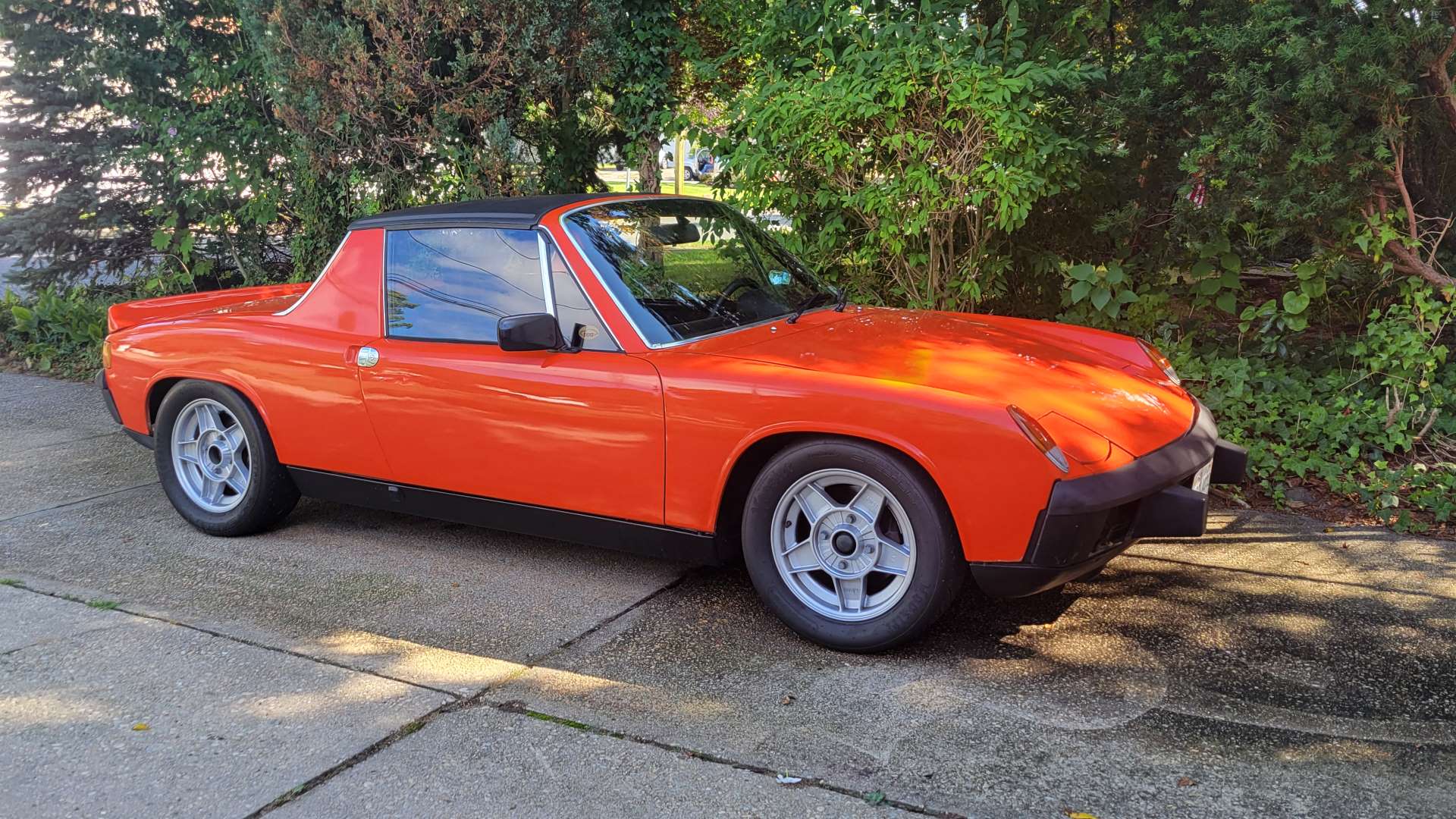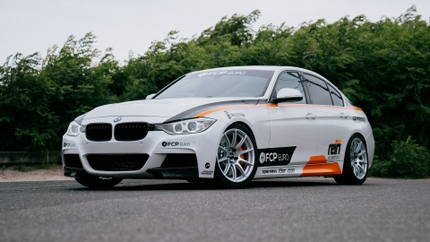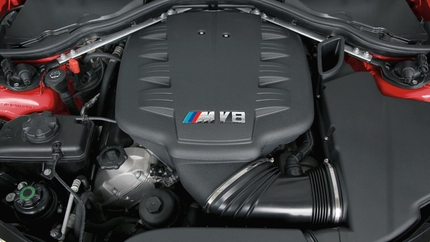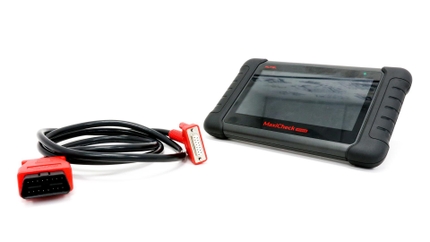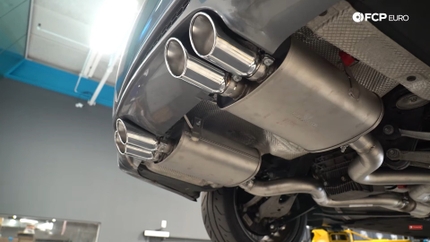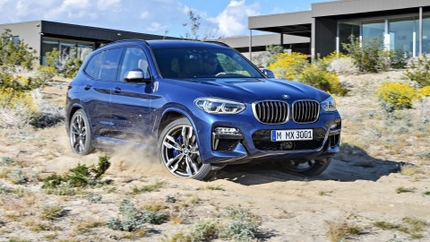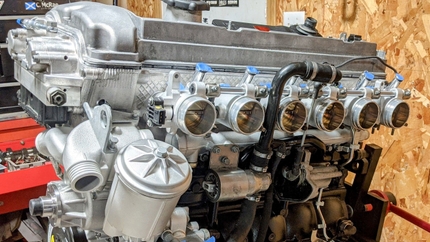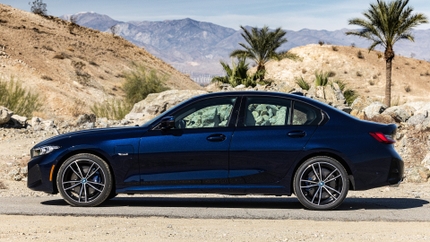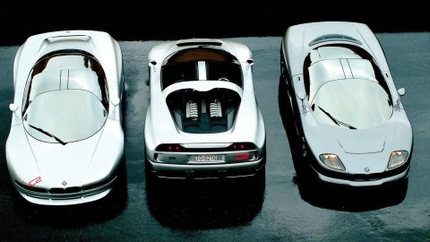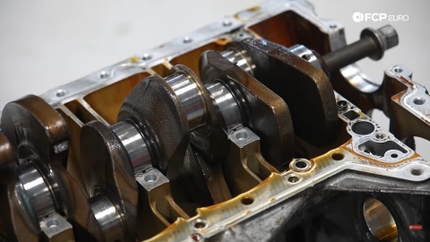- 09/03/2021
- 6 Min Read
- By: Christian Schaefer
Our Favorite Used Cars That Have Skyrocketed In Value During The Pandemic
Among the vast number of negatives that the COVID-19 pandemic has brought upon us, the unforeseen jump in enthusiast vehicles is salt in the wound. It wasn’t enough that we had to shelter inside for fear of catching a virus, but we got to watch as the cars we dreamed of appreciated beyond the limits of logic. However, not just dream cars appreciated, but the ones we took for granted, too. The cheap and light sedans we could pick up for a grassroots motorsports event or the ever-reliable ones that made great first cars have all gone up in price, though not necessarily value. Here are just a few of those now commanding more than before.
BMW E36

The BMW 3-series just might be the most versatile chassis in the world. It’s capable and comfortable in stock form and can be a competitive race car in several different types of events. Their motorsport-oriented chassis design, strong engines, and enormous aftermarket support allow owners to go in any direction they choose with their builds, and since there are so many 3-series on the market, their starting point is often cheap. The third generation of 3-series, the E36, is a perfect example of that, and buyers have noticed. Since the beginning of the Pandemic, prices for the lowest to the highest models have jumped a noticeable amount, taking away some of the E36’s reputation for being cheap and capable.
BMW introduced the E36 in mid-1991 for the 1992 model year, running with the chassis until 1999. They were available in sedan, coupe, and convertible forms until 1995, when the hatchback 318ti joined the lineup. Models were available with a few different engine options, a 1.8L inline-4 or a choice of three inline-6 cylinders in 2.0L, 2.5L, and 2.8L, depending on the model. Backing up those engines is a five-speed manual transmission or a four or five-speed automatic transmission, dependent on the model year. The range-topping M3 uses a 3.2L inline-6 cylinder engine with a five-speed manual gearbox and a limited-slip differential.

The E36 uses a relatively light chassis with BMW’s Z-Axle multilink rear suspension design from the Z1. With the new rear suspension design, BMW made their best handling 3-series yet and chose to campaign it in various Touring Car championships worldwide. At the hands of Steve Soper and Joachim Winklehock, BMW won the British Touring Car Championship in 1993. The E36 would win various other championships and prestigious races with other drivers, including the 1998 24 Hours of Nurburgring. Look around any grassroots motorsport, and you’ll likely see drivers using all of that factory BMW racing pedigree to full effect.
For many years now, the E36 has been one of the go-to choices for the drift and rally-cross communities. E36s were a dime a dozen on eBay and Craigslist, many with manual transmissions priced at less than $1500. A few suspension tweaks make them great when thrown sideways, and their low cost makes them easy to throw away. However, that $600 rolling shell has become a $2000 rolling shell since the Pandemic began. Drivetrains aren’t excluded either; our employees have watched as engines and transmissions removed from vehicles have nearly doubled in their asking prices since the end of 2019. Even the M3, a watered-down version of what Europe received, has seen its asking price rise from the mid-teens to the mid-twenties.

Every dollar counts these days, and the E36 is just another chassis from the nineties. Whether or not these prices are worth it is highly debated, with many arguing against it. However, the market reflects our current economic position, and we’ll have to get used to it. At the end of the day, the E36 represents value for money, a competent and reliable daily driver, or a capable and accomplished performer.
Porsche 996

The entry-level 911 is almost no more. For the last decade or so, the Porsche 996 911 was at the bottom of its depreciation. While values of every air-cooled model rocketed out of the troposphere, the 996 stayed grounded, with examples listed under $20,000. As cheap as that may seem, it's what happens when a legendary car receives an unfavorable update and an engine with an internet reputation of being a ticking time bomb. Realistically though, they were a supremely capable sports car that deviated from thirty years of history to do things a little differently. Reliability was a factor, sure, but look at the Mezger-engine, and you’ll see it wasn’t the best either. Now though, buyers have come around to the “fried egg” lights and misunderstood engine, realizing you can have a whole lot of car for not that much money.
The 996 was available in the US between 1999 and 2005. Carreras prior to 2002 use a 3.4L horizontally-opposed six-cylinder engine, while the post-2001 models use a 3.6L version. They make 296 and 320 horsepower, respectively, and use a six-speed manual or a five-speed automatic. As Porsche’s first water-cooled 911, the 996 had some teething problems throughout its run as Porsche’s top dog. While those problems are well documented and mostly solved now, there are some things you should know before jumping into ownership.

The 996 grew significantly over the 993 it replaced. Consequently, the interior is considerably bigger, making it a nicer place to be every day. And it is a place you can be every day, as even twenty years on; the 996 is a usable year-round machine as Porsche intended them to be. The 996 came in coupe, cabriolet, and Targa form, with rear or all-wheel-drive to give you the best option for your home environment. A majority of the cabriolets received the removable factory hardtop, and each model was available with a set of snow wheels and tires, too. The suspension design remained from the 993, though it did undergo some revisions. However, even on the most basic Carrera, that suspension is enough to deliver a sports car feel without breaking your back. Upgrades are widely available for the 996, too, for those looking to go faster or lower.
Prices for used 996s were hovering around the $20,000 mark for the last five years. Porsche made nearly 200,000 996s, and the quantity available on the used market reflects that; they’re everywhere. Post-Pandemic prices have taken over, though, and those high-teens, low-twenties examples have solidified themselves in the mid-$20,000 range. The factory Aerokit-equipped models now command over $30,000 with higher miles and in a common color. Is the most misunderstood 911 finally seeing its time in the spotlight, or are overeager buyers grabbing onto anything they can find at any price? Probably a bit of both, I think.
Audi B5 S4

This tuner Audi from the turn of the millennium is one of my personal favorites. Audi seemed to find its own during the mid-nineties, and the S4 played a significant role in that. Gone were the days of Group B rally dominance, in were powerful sedans anyone could drive every day. It represented the best all-wheel-drive performance sedan option on the market when it hit the showroom floors and still offers a competitive performance by today’s standards. Their engines, offering typical Volkswagen-Audi Group reliability, are highly tunable, too, with more power easily achievable. However, as buyers have grown more nostalgic with the upcoming electric revolution, the B5 quickly gains attention and value.
Against the then-brand-new WRX and the E46 330xi, the B5 S4 excelled. Its 2.7L twin-turbo V6 and six-speed manual transmission or five-speed Tiptronic automatic helped the Audi put its 250 horsepower and 258 pound-feet of torque to the ground, around 25 horsepower and 35 lb-ft more than the Subaru and BMW. Inside, all S4s were clad in leather with some receiving Alcantara inserts, depending on the spec. If you’re lucky, you’ll find one of the 1500 or so S4 Avants (Wagon) for sale, though they brought big money even before the pandemic.

The B5 S4 makes a great all-weather daily driver, though just about any Audi does. Their all-wheel-drive system makes them unbeatable in the snow, and their turbo V6 never lacks in power, especially when modified. Unlike the WRX of the same era, the S4 doesn’t throw its turbocharged rally pedigree in everyone’s face. There aren’t scoops or wings, just a clean and rounded shape with some small fender flares hinting away at its potential. Further separating the S4 from anything else are the stock 17” Avus six-spoke wheels, essential to their classic stock appearance.
Pre-pandemic, the B5 was sitting somewhere near the bottom of its depreciation curve. Hammered examples sat around the $5,000 mark, while driver quality examples were closer to double that. Now, those driver-quality cars are up in the mid to low teens, with the best examples fetching above $20,000. Quite a few were made, and many neglected, so cheap examples do exist. Their engine’s reliability issues are still a problem today, so know what you’re getting before bidding or buying.
Mercedes-Benz C209 CLK63 AMG Black Series

If there was ever a super coupe to have, the C209 CLK63 AMG Black Series just might be the one. In the late ‘00s, Mercedes decided that their regular CLK63 AMG wasn’t aggressive enough, so they raised the performance even further, taking cues from their F1 Safety Cars, and created the Black Series. What AMG produced is one of the most visually striking Mercs in the last twenty years. Take one look at it, and you’ll understand that the C209 Black series means nothing but business; it was purpose-built unlike anything else from Affalterbach at the time and has aged better than one could have planned for.
To make the Black Series, AMG took a standard CLK63 AMG and injected it with all types of performance enhancements to set it apart from anything else. Under the hood, it uses the same M156 engine as the standard CLK63 AMG, a 6.2L naturally aspirated V8 making 507 horsepower and 465 ft-lbs of torque in Black Series trim. Backing up that V8 lump is Mercedes’ 722.9 7G-Tronic SpeedShift automatic gearbox. The standard AMG gearbox of the time, it features a manual mode that locks its ratios and allows the driver to select a gear with the paddles on the steering wheel.

Surrounding that drivetrain is a C209 chassis turned up to eleven. Externally, the coupe features huge fender and quarter flares that house 19” forged wheels and massive brakes. The unique front bumper uses giant carbon air scoops to direct air to the brakes and under the car, where it’d eventually reach the small carbon diffuser under the rear bumper. Controlling the ride in the Black Series are rebound and compression-adjustable shocks utilizing springs with adjustable height. Those settings come in handy when dialing in the suspension that uses a track nearly three inches wider than the non-Black series CLK63. Also helping with the suspension is a host of chassis braces and stiffeners around the front and rear strut towers.
The C209 Black Series was never cheap to begin with, even before the pandemic. Mercedes brought just 349 of the special editions to the US between 2007 and 2009, and they were priced accordingly. Just before the pandemic, you could acquire a low mileage example for around the $70,000 mark. Today, you’re looking at a $90,000 minimum, with prices reaching over $140,000 for the nicest examples. Though sad for those who dreamed of owning one, the current price shouldn’t be a shock. It’s ultra-exclusive, looks fantastic, and delivers a performance that makes you forget about money. What more could you ask for?
Volvo S60R & V70R (P2)

The Swedes are no exception to the current pandemic pricing. Back in the early eighties, Volvo brought the turbocharged 240 series to the US. At the time, the optional turbocharged engine in the 240 series made it one of the quickest sedans and wagons around. Their tradition of offering practical and safe yet powerful sedans and wagons has continued today with the Polestar brand, giving Volvo their much due credibility for performance. But before Polestar took over the streetcars, Volvo released their performance-oriented R cars, such as the 850R’s, V70R’s, and S60R’s.
The P2 S60R and V70R were available in the US from 2004-2007, the S60R as the sedan and the V70R as the wagon. Both models use the B5254T4 engine, a 2.5L turbocharged inline-5 cylinder making 300 horsepower. Both models received two transmission choices, the M66 six-speed manual or an automatic transmission. The 2004-2005 models received a five-speed automatic capable of handling only 258 lb-ft of torque. 2006s and the 2007s received a six-speed auto strong enough to handle the full 295 lb-ft that the B5254T4 could produce.

On the inside, you can find typical Volvo quality but with a performance flair. The gauges received a unique blue finish; the comfy seats are replaced with full leather, high-bolstered sport seats, a thick-rimmed, thumb gripped, sport steering wheel, and the funky Spaceball shifter if a manual was chosen. Externally, Volvo kept both R models reasonably subtle, with unique bumpers, small front, and rear spoilers, extended skirts, and the classic five-spoke wheels. Combined with the Haldex all-wheel-drive driveline, active 4C suspension system, and standard Volvo safety features, it adds up to the perfect family hauler.
The aftermarket is also very fond of the P2 chassis, providing many ways of improving and upgrading the P2R twins. Like the Audi S4 and Subaru WRX, this is somewhat of a tuner car. Its turbo inline-5 is receptive to modification and can produce substantial amounts of additional power through bolt-on upgrades and ECU remapping. Be careful, though; there is a point where the stock bottom end cannot take more power and will give up. Ensure you know where that is before going too far.

Summer 2019 saw the P2Rs hovering around the $10,000 mark for a good driver-driver quality example, while the best of the best sat near the mid-teens. Today, those prices are gone. Driver quality cars mostly sit where the best used to, though not every owner has realized the jump in value, so they can still be found at pre-pandemic prices if you look at places like Facebook Marketplace. The best examples now command over $20,000 and sell on the Volvo forums and auction sites like Bring a Trailer. Suppose you have a rare exterior and interior color combination (such as Flash Green, Magic, or Sonic Blue, and the vibrant Atacama interior) with the manual transmission in good condition. In that case, you’re looking at closer to $30,000. Few cars offer what these Volvos do with the sound they make. They’re a future classic for sure.
For most, the past two years have been a torturous ordeal filled with confusing data, lots of politics, and a general lack of fun. Others watched as their vehicles gained significant value for reasons the market might not fully understand yet. Where are the prices headed, and are they currently worth it? Is this a market full of buyers with extra cash, or is our electric future causing anything vaguely enthusiast-related to go bananas? Maybe you can tell us. If you have the answer or think we missed out on a no-brainer for this list, let us know in the comments below. Subscribe to our YouTube channel and follow along on the DIY Blog for more daily content!

